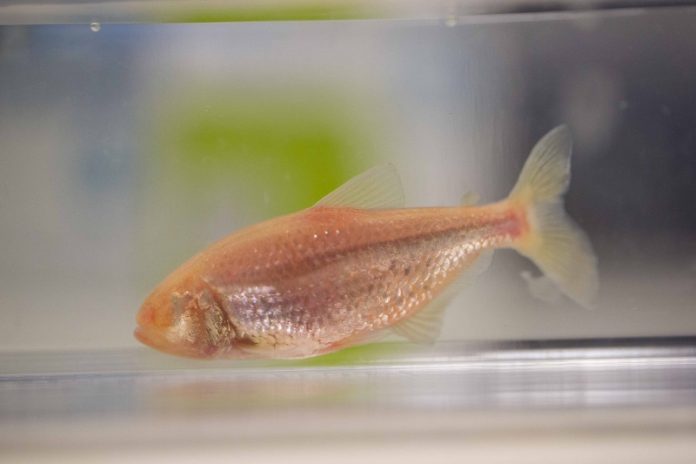
Over thousands of years, a unique species of fish known as the blind cavefish has evolved to live in complete darkness, losing their eyesight along the way.
But in a fascinating twist, these fish have developed an extraordinary number of taste buds on their heads and chins, a feature that increases as they age.
In a new study published in Communications Biology, scientists from the University of Cincinnati have investigated when these extra taste buds begin to appear and how they develop over time.
Blind cavefish, scientifically known as Astyanax mexicanus, live in the dark cave ponds of northeastern Mexico. They look quite different from their relatives that live in surface rivers and streams.
While the surface fish have large, round eyes and a silvery color, the cavefish are pale pink and almost see-through, with only faint outlines of eye sockets.
Despite these differences, the two fish are actually the same species. The loss of eyesight and skin pigmentation in cavefish is a well-known example of “regression,” a process where certain traits disappear over time. However, the appearance of new traits, like the extra taste buds, is less understood.
Scientists first discovered in the 1960s that some populations of blind cavefish had more taste buds on their heads and chins. But until now, there hasn’t been much research on how or when these extra taste buds develop.
To learn more, the research team led by Professor Joshua Gross studied two populations of cavefish from the Pachón and Tinaja caves in northwestern Mexico. Both groups of fish are known for having these additional taste buds.
The study found that the number of taste buds in cavefish is similar to surface fish from birth until they are about 5 months old. After that, the taste buds start to increase in number and spread to the head and chin, continuing to grow well into adulthood. By the time the fish reach about 18 months old, they have many more taste buds than their surface-dwelling relatives.
Interestingly, the researchers noticed that the timing and density of taste bud growth varied slightly between the two cavefish populations. Another surprising discovery was that the development of these taste buds is controlled mainly by just two regions of the fish’s genetic makeup, despite the complexity of the trait.
The increase in taste buds seems to coincide with the time when the cavefish stop eating other live animals and start looking for other food sources, like bat droppings, which are found in some caves. This suggests that the extra taste buds may help the fish adapt to their dark environment by giving them a sharper sense of taste.
However, the exact purpose of this enhanced taste system is still a mystery. To understand it better, Professor Gross and his team are planning new studies where they will expose the fish to different flavors like sour, sweet, and bitter.
This research highlights the remarkable ways in which life can adapt to extreme environments, even in the darkness of a cave.



